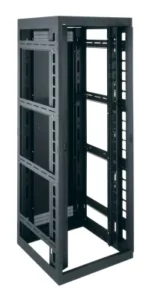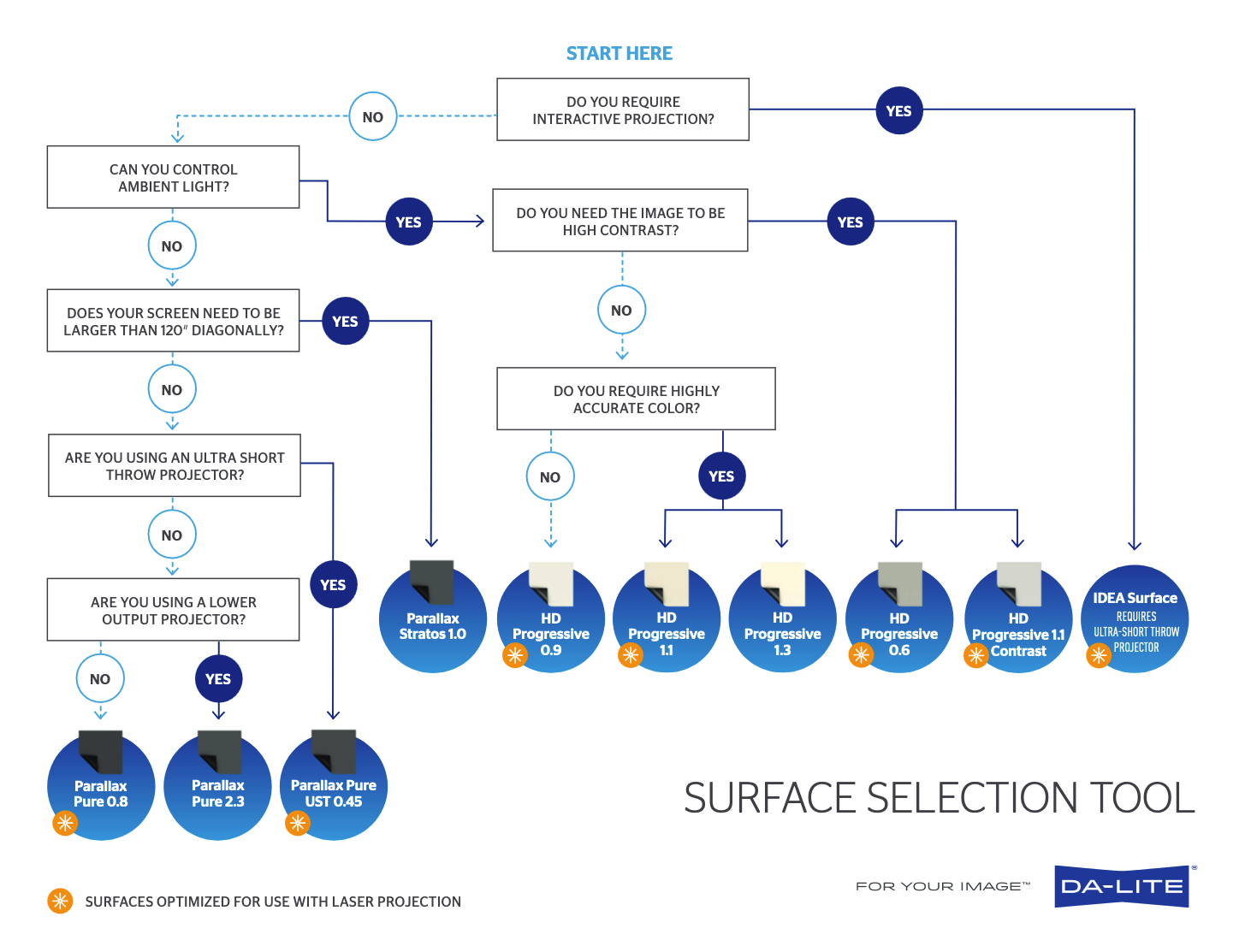This Blog Series is written by Exertis Almo's Business Development Managers: Ashley Nichols, CTS, DSCE, and John Borns, CTS, DSCE.
If you’ve been following along with our blog series for the past few months, you may have been led to believe that the only questions we ever get are related to projection systems. Who could blame you? You’ve obviously read 3 straight issues of our critically acclaimed mini-series on projection (edition 2, ed 3, and ed 4). Well, I hate to break it you like this, but you’d be wrong. We get all sorts of questions – and maybe you shouldn’t go around assuming things so much. 🤣 Maybe we shouldn’t have dedicated 80% of our blogs thus far to 1 topic. 🤔 There’s no way to know for sure. Anyway… Today, we’re going to talk about AV racks! Another seemingly mystifying part of the AV ecosystem that we’re going to try and make sense of for you.
QUESTION
John, Are these rackshelves/lacing bars/drawers compatible with my rack?
or… John, I have 8 pieces of gear. What size rack do I need?
or… John, How do I know if these pieces of gear will fit in my rack?
ANSWER
These may appear to be different questions, but in actuality, they all stem from not knowing the same basic principles about AV racks. Questions like these are very near and dear to Ashley and me, because we asked a lot of these questions when we first started working together at Middle Atlantic Products many moons ago. We totally remember what it was like trying make heads and tails of how racks work and how everything goes together and what goes where. It wasn’t until a kind soul (shout out to Jason Pavia!) came along and totally bailed us out and taught us how everything works. The beauty about racks is that they are actually very straightforward because there are rack STANDARDs in place.
Firstly, let’s talk about the width of the rack1. Every rack (as far as I know) is 19” wide between the rails. So, anyTHING that wants to be rack mountable is going to conform to that width. Power strips, amps, shelves, mixers, you name it – they’re all going to be that width (or have some additional rack mount hardware that allows to it to cover that space). You pretty much never need to worry about whether or not something will fit into a SPECIFIC rack, because all racks are same size.
The second thing to know is the RACK UNIT2 (or RU as it’s more commonly referred to). A rack unit is always 1.75” high…but that doesn’t really even matter, because everything that is going to be mounted onto a rack must confirm to a solid RU measurement. So those amps, power strips, drawers, etc., that we mentioned above, are all 1 RU, 2 RU, 3 RU etc. So, knowing all of that, you can confidently assume that all of your rack mountable gear will fit in whatever rack you end up going with AND you can determine how tall of a rack you need by simply knowing how many pieces of gear you’re putting in there and how many RUs they occupy.
The last thing consider is the depth of the rack3. This is where the standards sort of dry up. The main thing to concern yourself with here is the depth of your DEEPEST piece of gear. You pretty much just need to make sure that it’s deep enough to accommodate that one piece, with a little extra room for cables and air flow. So, if you have a 20” deep UPS, you’ll probably want to get like a 24” deep rack.
QUESTION
How do I know which type of rack to choose? Wall-mounted? Gangable?
Why would someone need one vs the other?
ANSWER
I’ll admit that no one has asked me this question exactly, but it is an amalgamation of a general overwhelming feeling people have when trying to start looking for a rack. There are a TON of options out there and knowing which ones to use and when can feel intimidating at first. This is really where understanding the needs of the system and users is critical. Most racks are built with a certain type of application in mind. Let’s hit on a few of the common ones and why people would want to consider them.
 Wall-Mounted Racks – There a few different uses here. Mainly, if you have smaller rack need…something like 8-10 RUs….it may be easier to access the gear for use or service by having it hanging off of the wall at eye level. Bending down or kneeling to get to the gear can be an unwanted nuisance, especially if the gear is being accessed routinely. Additionally, maybe you want to keep the gear away from small people with bad intentions – kids. Wall-mounted racks are used in classroom applications. Also, simply having the rack secured to the wall can save space in some locations and may help keep a cluttered closet a little more organized.
Wall-Mounted Racks – There a few different uses here. Mainly, if you have smaller rack need…something like 8-10 RUs….it may be easier to access the gear for use or service by having it hanging off of the wall at eye level. Bending down or kneeling to get to the gear can be an unwanted nuisance, especially if the gear is being accessed routinely. Additionally, maybe you want to keep the gear away from small people with bad intentions – kids. Wall-mounted racks are used in classroom applications. Also, simply having the rack secured to the wall can save space in some locations and may help keep a cluttered closet a little more organized.
Gangable5 Racks – This is really just a way of describing racks that can be fixed to one another in a row. If you’ve ever infiltrated a high security data center to get access to the heavily guarded corporate secrets, then you’ve undoubtedly seen a bunch of server racks “ganged” together. This allows for multiple racks to sort of operate as one larger unit, allow for cables to pass more easily between one another, save space, etc. Additionally, maybe you have a small system now, but one to potentially expand in the future. Getting gangable rack will allow your system to be scalable…to expand into a second rack down the line.
 2-Post Racks vs 4-Post Racks – Generally speaking, in AV applications, you won’t commonly use 2-posts racks. These are typically used in network-based applications with thinner patch panels and lots of wire management needs. 4-post racks are sturdier and can handle heavier AV gear like your amplifiers, DSPs, Mixers etc. Also, 4-posts racks can be more easily built into larger cabinets, which gives them additional options that may improve your system. Speaking of which…
2-Post Racks vs 4-Post Racks – Generally speaking, in AV applications, you won’t commonly use 2-posts racks. These are typically used in network-based applications with thinner patch panels and lots of wire management needs. 4-post racks are sturdier and can handle heavier AV gear like your amplifiers, DSPs, Mixers etc. Also, 4-posts racks can be more easily built into larger cabinets, which gives them additional options that may improve your system. Speaking of which…
Other things to consider – Security, thermal management, additional storage, etc. I’m certainly not going to be able to do these additional considerations justice. Racks that can have fully welded side panels, and lockable doors are much secure than those that don’t. Some racks are better equipped to manage the heat in the rack (which is critical to control if you want to preserve the life of your gear). Some racks have more room inside the cabinet, or can accommodate special accessories, making it much easier to mount small devices and power strips. Knowing which of these features are critical for your project will help guide you towards the right rack. Luckily, we’re here to help guide you if you need some help!
Vocab Test Time!
Are these the most detailed definitions? No – we are not a dictionary, nor the AVIXA CTS Prep book. Will someone message us after still telling us how much we missed? Possibly. Will these get you a basic working knowledge of these terms and why they matter? We hope so. Plus, we are 99% sure they will help you impress your grandparents when you reset their WIFI. 🤔
- Width of rack – always 19”, doesn’t matter the rack.
- Rack Units (RUs) – 1.75” per rack unit. Describes the height of a rack and rack mountable gear.
- How deep is your rack – Make sure it’s deeper than your deepest piece of gear.
- How deep is your love? – I really need to know…
- Gangable – Racks that can be easily connected together.


John Borns | CTS, DSCE
Business Development Manager
Supported Manufacturers: Legrand AV (NE, SE, MW) – Chief, C2G, Da-Lite, Luxul, Middle Atlantic, Vaddio, Wiremold








